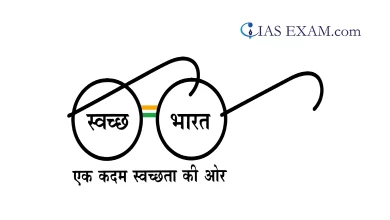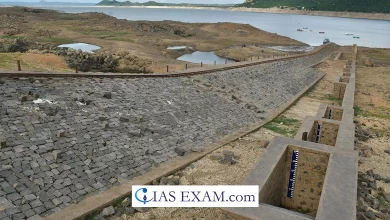UPSC Editorial Analysis
Direct Seeding of Rice and its Effectiveness
[GS Paper 1 – Major Crops and Cropping Patterns]
Context – The Punjab government recently announced Rs 1,500 incentive per acre for farmers opting for Direct Seeding of Rice (DSR), which is known for saving water.
About Rice Cultivation
- Rice is a staple food for the overwhelming majority of the population in India. It is a kharif crop which requires high temperature (above 25°C) and high humidity with annual rainfall above 100 cm.
- In the areas of less rainfall, it is grown with the help of irrigation. In southern states and West Bengal the climatic conditions allow the cultivation of two or three crops of rice in an agricultural year.
- In West Bengal farmers grow three crops of rice called ‘aus’, ‘aman’ and ‘boro’. About one-fourth of the total cropped area in India is under rice cultivation.
- Leading producer states: West Bengal, Uttar Pradesh, and Punjab.
High Yielding States: Punjab, Tamil Nadu, Haryana, Andhra Pradesh, Telangana, West Bengal and Kerala. Punjab and Haryana are not traditional rice growing areas. - India contributes 21.6% of rice production in the world and ranked second after China in 2016.
What is DSR?
- In transplanting, farmers prepare nurseries where the paddy seeds are first sown and raised into young plants.
- These seedlings are then uprooted and replanted 25-35 days later in the main field.
- Paddy seedlings are transplanted on fields that are “puddled” or tilled in standing water using tractor-drawn disc harrows.
- In DSR, there is no nursery preparation or transplantation. The seeds are instead directly drilled into the field by a tractor-powered machine.
Water Requirement for Paddy Cultivation
- Paddy is non-shelled rice that farmers grow and sell in mandis and then after milling paddy rice is prepared.
- According to the studies, around 3,600 litres to 4,125 litres of water is required to grow one kg rice depending upon the paddy variety. Long duration varieties consume more water.
- In Punjab, 32% area is under the long duration (around 158 days) paddy varieties, and the rest comes under paddy varieties that take 120 to 140 days to grow.
- So, on an average 3,900 to 4,000 litres of water is required to grow one kg rice in the state.
- In 2020-21, Centre procured 203 lakh tonnes of paddy from Punjab. After milling, this procured paddy resulted in 135.98 lakh tonnes of rice.
- Since studies put average water required to produce one kg rice at 4,000 litres, so in one year – based on last year’s estimate – Punjab needed 5,400 billion litres of water to produce 135 lakh tonnes rice.
Benefits with DSR
- DSR technique can help save 15% to 20% water. In some cases, water saving can reach 22% to 23%.
- With DSR, 15-18 irrigation rounds are required against 25 to 27 irrigation rounds in traditional methods.
- Since the area under rice in Punjab is almost stagnant, DSR can save 810 to 1,080 billion litres of water every year if the entire rice crop is brought under the technique.
- DSR can solve labour shortage problems because like the traditional method it does not require a paddy nursery and transplantation of 30 days old paddy nursery into the main puddled field.
- With DSR, paddy seeds are sown directly with a machine. DSR offers avenues for ground water recharge as it prevents the development of hard crust just beneath the plough layer due to puddled transplanting.
- It matures 7-10 days earlier than the puddle transplanted crop, therefore giving more time for management of paddy straw.
- Research trials indicated that yield, after DSR, are one to two quintals per acre higher than puddled transplanted rice.
Limitations with DSR
- Suitability of soil is the most important factor as farmers must not sow it in the light-textured soil.
- This technique is suitable for medium to heavy textured soils including sandy loam, loam, clay loam, and silt loam which accounts for around 80% area of the state.
- It should not be cultivated in sandy and loamy sand as these soils suffer from severe iron deficiency, and there is a higher weed problem in it.
- Also, avoid direct seeding of rice in fields which are under crops other than rice (like cotton, maize, sugarcane) in previous years as DSR in these soils is likely to suffer more from iron deficiency and weed problems.





.png)



